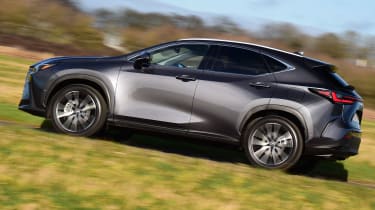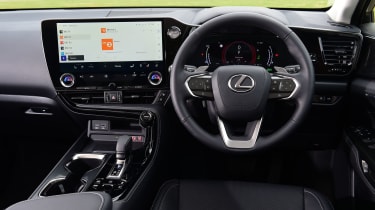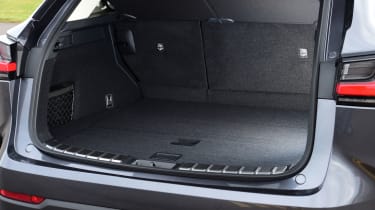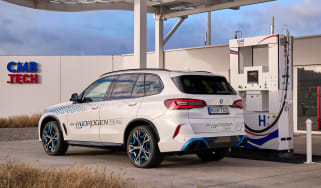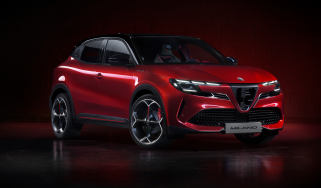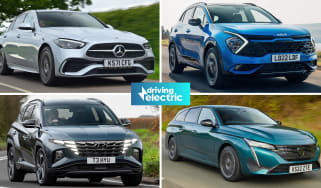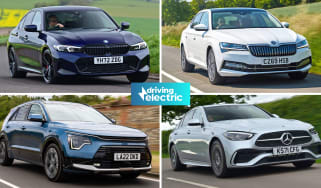Lexus NX 450h+ plug-in hybrid review
Lexus' first plug-in hybrid offers class-leading efficiency, great refinement and a 40-mile electric range. It should make company-car drivers take notice
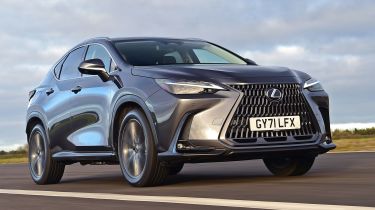
Pros
- Class-leading efficiency
- Refined and comfortable
- 7% BiK company-car tax rate
Cons
- Quite expensive
- Modest performance
- CVT gearbox
| Car type | Electric range | Fuel economy | CO2 emissions |
|---|---|---|---|
| Plug-in hybrid | 40 miles | 257-314mpg | 21-25g/km |
Lexus was one of the first brands to adopt hybrid technology and has used parent company Toyota’s tried-and-tested “self-charging” setup in several models, from the ES and LS saloons to the UX and RX SUVs. The brand has taken its time moving beyond full hybrids, but 2021 has seen the launch of its first electric car, the UX 300e, and 2022 will see the arrival of its first plug-in hybrid, this NX 450h+.
The second generation of Lexus’ premium mid-sized family SUV will also be available in full-hybrid form like the outgoing car, but we've put the plug-in hybrid version through its paces first. It’ll directly rival the BMW X3 xDrive30e, Mercedes GLC 300 e and Volvo XC60 Recharge, among other plug-in hybrid SUVs.
The plug-in NX combines a 2.5-litre four-cylinder petrol engine with a pair of electric motors fed by an 18.1kWh battery. The result is 302bhp on tap, CO2 emissions as low as 21g/km and around 40 miles of pure-electric driving at up to 83mph – meaning those with short commutes won’t need to use a drop of petrol if they remember to charge it.
As a result, the NX 450h+ is capable of returning more than 300mpg in test conditions, which is significantly more than any of its rivals can claim. Plus, when the battery is depleted, the 450h+ effectively becomes a "self-charging" hybrid, which Lexus claims should improve the SUV’s efficiency by 20% compared to rivals. Essentially, even when you run the battery flat, you still get minor electrical assistance at low speed. The test car we drove didn’t have a fully charged battery, yet the plug-in NX was able to return a respectable 55mpg – more than Lexus claims the full-hybrid version of the same SUV can achieve.
Regardless, when taken together, the plug-in NX’s excellent efficiency figures translate to a 7% Benefit-in-Kind (BiK) tax rate, which makes it an appealing choice for company-car drivers looking to cut running costs. With four-wheel drive thanks to the electric motor on the rear axle, 0-62mph takes 6.3 seconds, while fully topping up the battery takes just under three hours using a home wallbox.
In electric mode, the NX 450h+ is extremely quiet, with the motors providing enough power to get you off the line and accelerate with plenty of pace without the engine needing to chime in. The CVT transmission does the send the revs soaring on occasion, however, the transition from electric to petrol (or vice-versa) is superbly smooth. Plus, the Lexus is much more refined and comfortable than the Toyota RAV4 PHEV with which it shares its technology, and rides better on the road but doesn’t sacrifice body control.
Partially influenced by the Lexus LFZ concept, the exterior of the new NX is more of an evolution of the car it’s replacing than a radical rethink. Overall, it’s less angular, but still features the slim LED headlights and large spindle grille that make the mid-size SUV unmistakably a Lexus. Plus, there’s now a full-width tail-light, while the NX has grown by 20mm in overall length and has a 30mm longer wheelbase.
Inside, the NX has had a complete overhaul. The cabin has been decluttered with 50% fewer buttons than its predecessor and the design overall is simple and modern, and still lives up to the quality you’d expect from Lexus. The standout highlight of this NX, though, is the all-new infotainment system – an area that has traditionally been the weak point for Lexus.
The entry-level NX 450h+ features a 9.8-inch central touchscreen, while F Sport and Takumi trims get a much larger 14-inch unit, paired with the 10-inch digital driver’s display. In both cases, the infuriating trackpad control of the previous NX has been ditched; you can now tap the screen directly, as well as using the standard wireless Apple CarPlay and wired Android Auto to mirror your smartphone's screen on the dash. The screen is handily within reach for the driver so it’s easy to operate, and menu layout is also more straightforward, too.
All plug-in hybrid NXs also feature wireless smartphone charging, a reversing camera, dual-zone climate control, heated seats, LED headlights and keyless go, among other kit included as part of the third-generation ‘Lexus Safety System+’, which is also standard. However, the cheapest plug-in NX will cost nearly £50,000.
Cabin space has also improved, with the new NX feeling less cramped inside than the previous generation. Both the full and plug-in hybrid versions boast 545 litres of boot space, which is 100 more than the plug-in BMW X3 offers, and 150 more than the similarly electrified Mercedes GLC. Fold the seats down, and you get 1,436 litres of load capacity.
Overall, the plug-in hybrid version of the new NX adds refinement and class-leading efficiency to an already appealing package. There are several significant improvements over the previous generation, such as more cabin space and a vastly improved infotainment system, while material and build quality throughout are as strong as ever.
It’s certainly on the pricier end of the plug-in hybrid SUV spectrum, but it’s on par with premium rivals from BMW, Mercedes and Volvo in this respect. Plus, it's set to be cheaper where it matters for company-car drivers, in terms of both its BiK rate and other ongoing running costs.

